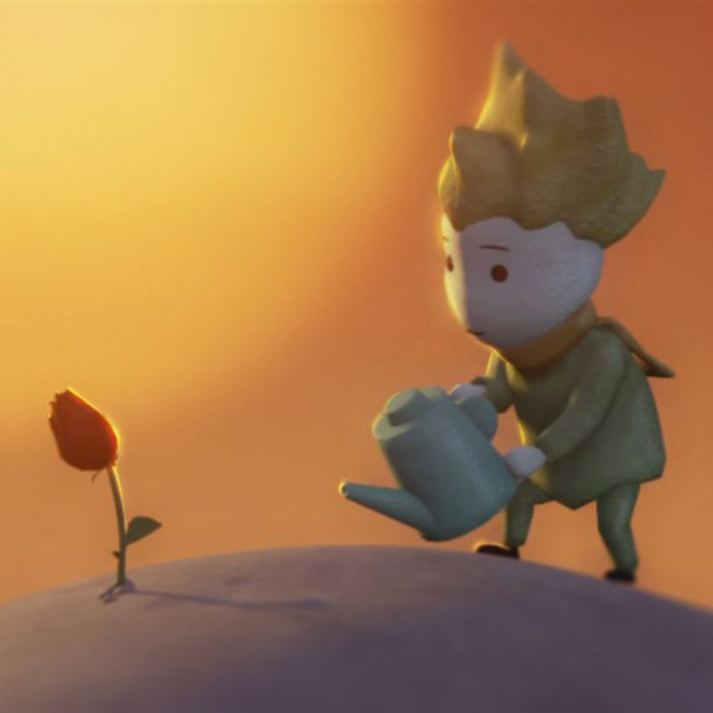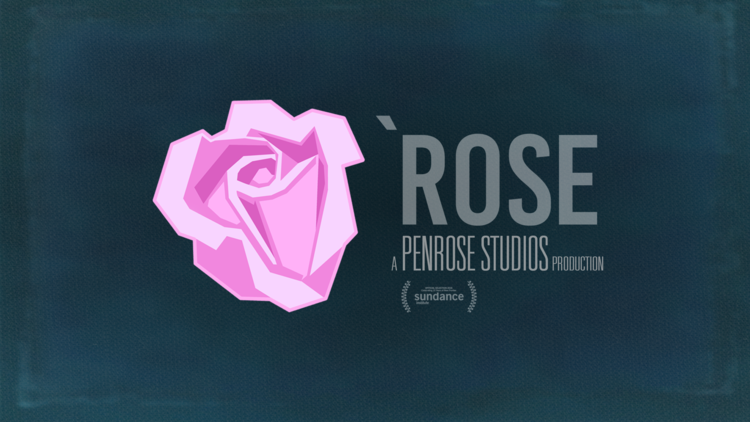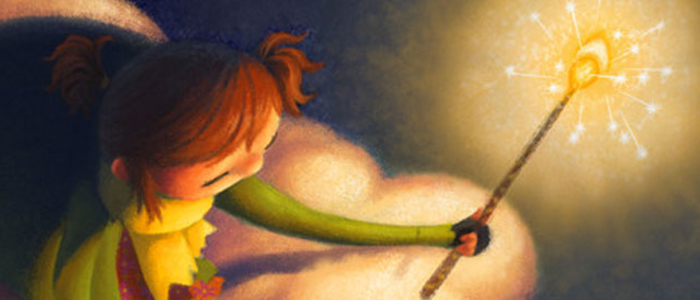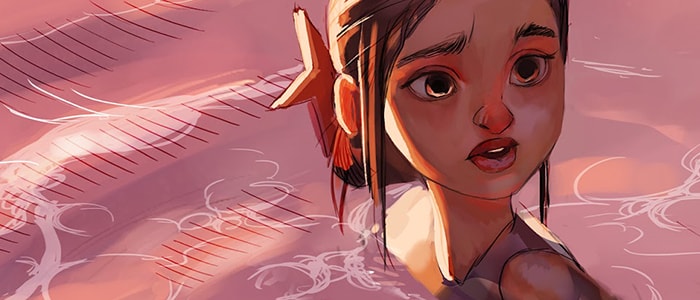The Rose and I
Penrose’s first VR film “The Rose And I”, made its World Premiere in the New Frontier section at the Sundance Film Festival in 2016.

Inspired by Chapter VII of Antoine de Saint-Exupéry’s Le Petit Prince, its main premise is about the spark of excitement when boy meets girl, or boy meets rose, as the case may be. The rose was by several accounts representative of the torrid and turbulent love affair between the French Saint- Exupéry and his Spanish wife. Our piece focuses on that dynamic moment of a first meeting, filled with romantic anticipation of what is to come.
The short, 5-minute romantic comedy vignette, while simple in its premise and formulation, was motivated by different forces than the preponderance of VR works that were being made at the time.

From the beginning, we knew porting to mobile VR wouldn’t be simple, especially because the graphics unit of the Galaxy S6 is 150 times less powerful than the Titan Black Graphics Cards that we are using on our PCs. We had to make various optimizations, such as the use of unlit materials and dot product lighting. We also had to make judicious decisions to reduce, or in some cases cut out, parts of the experience. For example, we disabled all post processing, such as bloom, on the GearVR and removed all the dust particles. Despite these changes, we strived to maintain the charm and delightfulness that is the core essence of our experience.
Another key challenge centered around Gear VR’s lack of positional tracking—the ability of the viewer to move freely with 6 degrees of freedom (6DOF) in Euclidean space in VR. That freedom of movement is one of the key elements that made our original “The Rose And I” compelling.
For our Gear VR film, we wanted to capture some of that magic. Thus, we created a movement mechanism utilizing the built-in Gear VR touchpad that allows the viewer to rotate the primary object in front of them in real time throughout the duration of the short film. This allows the viewer to watch the story from different viewpoints. We call this particular mode of interactivity “Touch Orbit”—or “Torbit” for short.
In the same way that the PC version of “The Rose And I” allows the viewer to completely immerse themselves and move around in a world, stories in ROSE will allow a viewer to immerse themselves using the Gear built-in controls to watch the story from different angles of their choosing.
The result is a gorgeous, real-time cinematic experience in mobile VR.
The next few years of VR storytelling will be about developing the language around this new art form, as distinct and unique from cinematic language as the cinema is from the opera and the stage play. As VR creators, we have a small but rapidly growing arsenal of tools.
One key philosophical question raised by the Torbit is around how interactivity affects a viewer’s experience of a VR story. This is a smaller part of one of the great unanswered questions about this new art form, which centers around identity in VR—who are we supposed to be? An interesting early observation of VR is that ostensibly, Presence and Storytelling are in conflict. Finding solutions to this conundrum will be an interesting problem for VR creators for years to come.
We’re excited to be launching this platform in conjunction with the consumer Gear VR. Storytelling in virtual reality is still in its infancy, and with the launch of ROSE, we hope we’re taking one small step in helping to pave the way for this new art form. While it lacks the power of PC VR, the portability of the Gear VR is magical, and as John Carmack said back during the launch of the Note 4 Gear VR Innovator Edition last year:
The magic of a completely portable and wireless VR headset is easy to underestimate until you have experienced it. We don’t have the raw horsepower of a high end gaming PC (yet), but there are valuable compensations that make it a very interesting trade off, and many developers will thrive on the platform, especially as it improves at the rapid pace of the mobile ecosystem.
At it’s very core, virtual reality is about being freed from the limitations of actual reality. Carrying your virtual reality with you, and being able to jump into it whenever and wherever you want qualitatively changes the experience for the better.
Experiencing mobile VR is like when you first tried a decent desktop VR experience — There is a sense that you are glimpsing something from the future. This is science fiction made real, and it’s only just the beginning. – John Carmack, Oculus CTO
Penrose’s mobile initiatives do not alter our commitment to console and PC VR as well as AR. Our goal is to push the boundaries of virtual and augmented reality storytelling in any form. We believe each hardware platform has something unique to offer, and we look forward to continue to explore these exciting opportunities.
We hope you enjoy exploring the world of ROSE.
Related Media:
Other Worlds & Stories

Allumette






